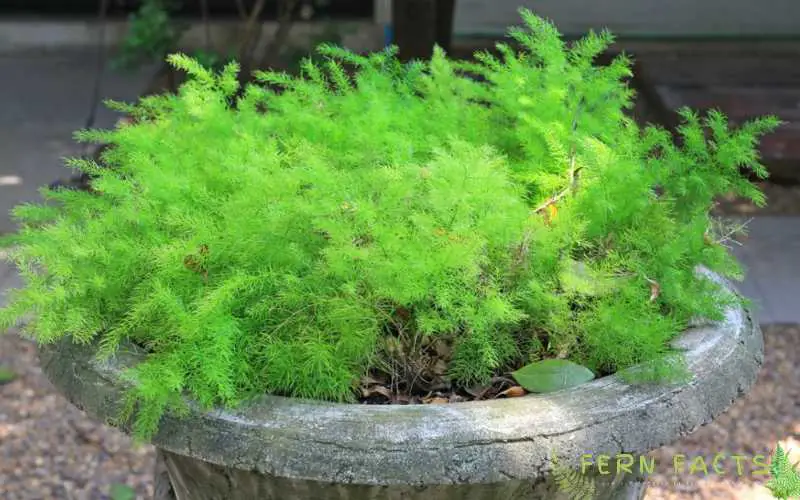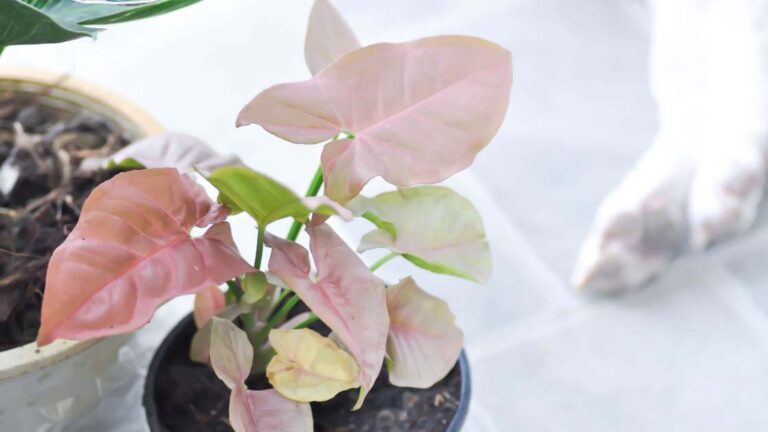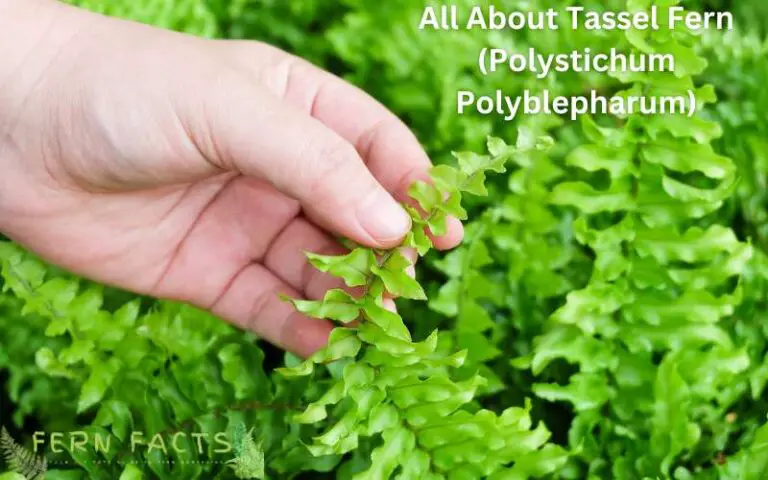Asparagus Ming Fern – All You Need To Know
Asparagus ferns are one of the prettiest and delicate ferns to plant both indoors and outdoors. But do you know, that these asparagus have different variations?
Asparagus Ming ferns in one of the varieties of this asparagus genus. If you want to grow these ferns at your house, then this article will thoroughly help you with all your confusion.
In this article, we are going to overview the ming ferns with their features which will inform you about the ming ferns characteristics. Later I will provide caring and management tips along with their common problems so that you can grow these plants in your house while troubleshooting all the issues.
So let’s explore this variety of ming fern.
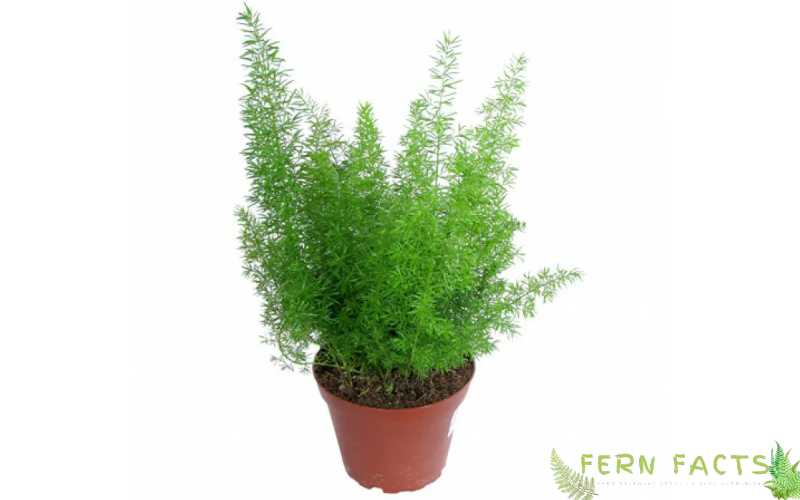
Overview of Ming Ferns
- Botanic name: Asparagus retrofractus
- Common name: ming fern, zig-zag shrub, pom pom asparagus
- Native range: South Africa
- Family: Asparagaceae
- Plant type: evergreen perennial
- Size: around 6 ft tall, 5 ft wide
- light: bright and indirect
- Soil: potting soil with a well-drained system
- Flower: small white flowers
- Water: daily misting, weekly watering
- Humidity: moderate to high
- Temperature: 55 to 88 F
- USDA zone: 9 to 11
- Fertilizer: yearly repotting, rich in nutrients
- Propagation: seeds or roots divided
- Pet & diseases: mealy bugs, scale insects, spider mites
- Toxicity: pet & humans, skin irritation
Ming ferns are one of the delicate beautiful flowers used for both indoor and outdoor use. These ferns are quite easy to manage. Even if you can keep them in a small pot like bonsai, it will adapt itself quite happily.
All About Ming Ferns
Ming ferns are the subspecies of Asparagus ferns. Generally, asparagus ferns are not true ferns, that’s why its subspecies are not also actual ferns.
These ming ferns grow in clusters and have shrub needles like fronds. Their fronds also have long woody leaves with zig-zag patterns along with bases of the stems that are thick and the color is slightly silver.
The silver zig-zag patterns make these ferns more elegant to observe. You can spot these ferns in South Africa inhabited near the river areas and sandy rocky areas.
These ferns also produce little white flowers in their blooming seasons. Generally, Ming Fern’s growing season starts between May and July. Briefly, it grows actively during the spring and early summer.
As they are the perennial plants they remain green throughout the years.
These ferns can grow up to 6 to 8 feet in height under USDA Zone 9 to 11. If you want to grow these plants outside then you can grow them under the 10+ hardiness zones.
Additionally, these plants will require bright indirect sunlight or filtered sunlight and also need sufficient water so that the soil will stay moist. However, they can tolerate full sun at 30° F.
These are toxic and not edible to pets and humans as well. Neither their fronds nor their flowers are edible.
If you have pets at your home then you need to be careful and keep away your pets from these plants. Therefore, you need to be cautious around these plants as they produce nothing that can be edible.
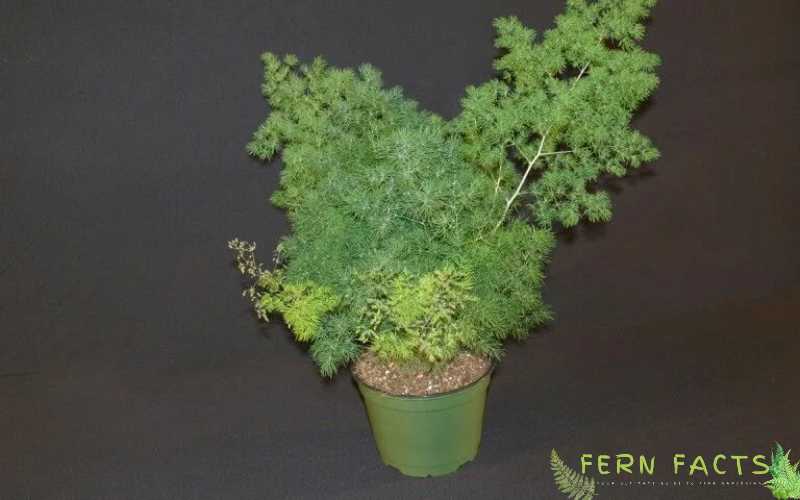
Ming Ferns Care and Maintenance
In order to have thriving, lush ferns you need to take care of these ferns. Although they do not require much maintenance, still you need supervision which every plant needs more or less.
- Learn More About How to Care for and Nurture Fishtail Fern.
Light
Ming fern has the ability to tolerate a fair amount of sunlight, however, try to avoid keeping them under direct sunlight. You can choose a window where the sun’s rays come through a filtered way.
Try to avoid dim light conditions because these ferns are fond of bright light conditions rather than dim light. You can put them in a bright place where they can grow fully.
Water
Ming ferns don’t prefer overwhelming portions of water or standing water, however they do like misting on a frequent basis. You can water them on a regular basis so that the soil remains moist and not overly soaked.
For misting the ferns, you can spray at the center of their plant rather than misting on the branches. Similarly, both overwatering and underwater could be an issue for Ming ferns.
Overwater can rot their roots whereas underwater makes their soil too dry. Therefore, you need to adjust your watering level based on seasonal demand.
Remember the correct level of watering is the key feature to enhance plant growth.
Soil
Ming ferns need well-drained water with moist soil. Moisture in the soil helps the ferns stay hydrated. Even well-draining soil won’t dry out easily and hold the moisture for a longer period which is beneficial for the plants.
To enrich the soil texture, you can add one-third of peat moss, sand, and compost. You can also use a little bit of leaf mold if you want to.
If you want to grow these ming ferns in the pot then you need to refresh the soil every two to three years while putting them in larger containers according to their growth level.
Fertilizer
Fertilizing can enhance the growth of your plants gradually. Therefore, you need to feed them consecutively. You can purchase good potting soil each year and can report it with fresh nutrients soil.
After planting for the first time you can avoid giving fertilizer in the first year of their planting. After one year, you have to feed your plants. You can also use liquid fertilizer apart from organic compost.
However, ming fern is not that choosy or picky regarding fertilizer, you can give them any fertilizer during their growing seasons (spring) which would be enough for them.
If you see no growth in the spring season, you can provide another portion of fertilizer during the summer season as well.
Propagation
The best propagation time of the Ming fern is in the spring seasons before the new growth appears on the ferns.
The genus of these ming fern is an asparagus fern which is not a true fern. As a result, ming fern is also not a true fern. Therefore it will not grow from spores.
However, still, you can propagate these ferns by the division of the roots. You can divide the ferns from the center parts or from the tubers and create e new ferns.
After dividing the ferns from the main ferns, you have to replant them with a new soil mixture.
These ferns also produce red berries in the summer and in the fall. And so, you can use these berries to make new ming ferns from the seeds.
If you want to grow ming ferns from the seeds, try to soak the seeds overnight in the water or at least for 12 hours. Then spread them on the mixing soil surface.
Then water the soil surface properly. You will notice within three to six weeks seeds will be germinated.
Common Problems of Ming Ferns
Like other ferns, ming ferns also face some problems and diseases while growing. You need to be aware of all the problems so that you can understand the nature of your mind ferns and can cure them thoroughly.
General Issues
While planting these ming ferns, you will notice they have a tendency to turn yellow. If you observe any yellow fronds or leaves in your plants then the possible reasons would be overwatering frequently.
Therefore, you need to check the soil conditions before watering them. You can also do them check-up while watering your plants.
Another issue is the burning issue of Ming ferns. If you put them under direct sun exposure then your ferns might get burned due to excessive heat.
Pests and Diseases
All the problems are equally relevant to each other. If you overwater your plants, the soil will be too soggy and mushy. Later it may develop certain types of pests like mealybugs, scale insects, and spider mites on the roots.
These pests and insects could give your plants fungus diseases or infections. That’s why you need to use insecticidal soap to get rid of those bacteria and viruses.
Final Observation
To final thought, ming ferns are one of the varieties of Asparagus Ming Ferns whose zig-zag patterns make these ferns pretty appealing to plant lovers and gardeners.
However, growing and planting these ferns are quite manageable because these ferns are low-maintenance ferns. Nonetheless, you can grow and plant these ferns by following all the tips mentioned in this article.
Similarly, you can also cure these ferns’ common problems and issues with the guidelines above. Thus, by following simple guidelines you can easily grow these ming ferns at your house and give them a healthy atmosphere for thriving and nourishing.

